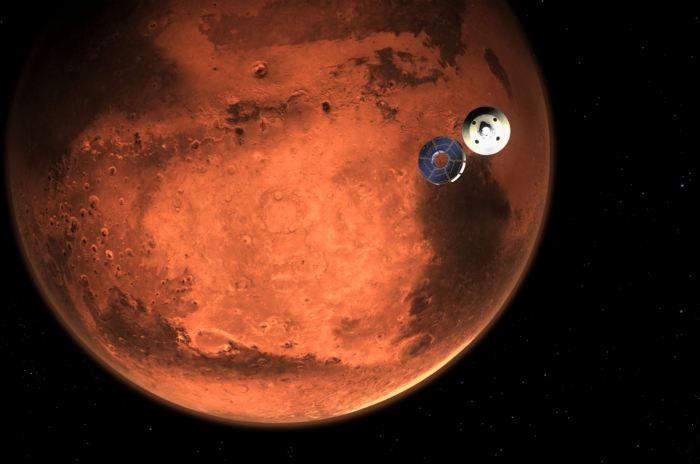The Wright brothers invented and successfully engineered the first powered flight on Earth in 1903 and now, more than a century later, the National Aeronautics and Space Administration (NASA) intends to prove that it's possible to replicate the feat on another planet for the first time in aviation history with a helicopter, aptly named “Ingenuity.”
Transported aboard the Mars 2020 spacecraft that arrives at the Red Planet on Thursday, the small “Ingenuity” helicopter will have several challenges to overcome – the biggest being the rarefied Martian atmosphere, which is just one percent the density of Earth's.
It might be called a helicopter, but in appearance it's closer to the mini-drones we've grown accustomed to seeing in recent years.
Weighing just four pounds (1.8 kilograms), its blades are much larger and spin about five times faster – 2,400 revolutions per minute – than would be required to generate the same amount of lift back on Earth. It does however get some assistance from Mars, where the gravity is only a third of that on our home planet.
“Ingenuity” has four feet, a box-like body, and four carbon-fiber blades arranged in two rotors spinning in opposite directions. It comes with two cameras, computers and navigation sensors.
It's also equipped with solar cells to recharge its batteries, much of the energy being used for staying warm on cold Martian nights, where temperatures fall to minus 90 degrees Celsius (minus 130 degrees Fahrenheit).
The helicopter is hitching a ride on the belly of the “Perseverance” rover, which will drop it to the ground once it has landed then drive away. Up to five flights of gradual difficulty are planned, over a window of one month, within the first few months of the mission.
“Ingenuity” will fly at altitudes of 3-5 meters (10-15 feet) and travel as far as 50 meters (160 feet) from its starting area and back. Each flight will last up to a minute and a half – compared to the 12 seconds the Wright brothers achieved with the first powered, controlled flight in Kitty Hawk, North Carolina in 1903.
Like the “Perseverance” rover, “Ingenuity” is too far away from Earth to be operated using a joystick, and is therefore designed to fly autonomously. Its onboard computers will work with its sensors and cameras to keep it on a path programmed by its engineers. But the outcome of these flights will be learned only after they took place.
NASA describes the mission of “Ingenuity” as a "technology demonstration": a project that seeks to test a new capability together with the astrobiology mission of “Perseverance.” If it's successful, however, it "basically opens up a whole new dimension of exploring Mars," said Bob Balaram, chief engineer of “Ingenuity.”
Future models could offer better vantage points not seen by current orbiters or by slow-moving rovers on the ground, allowing the helicopters to scope out the terrain for land-based robots or humans. They could even help carry light payloads from one site to another – such as the rock and soil samples “Perseverance” will be collecting in the next phase of the Mars 2020 mission.
The red planet has long been a point of fascination and humankind has been on a 6-decades-long mission to reach it.
















































